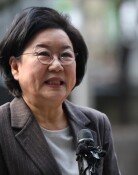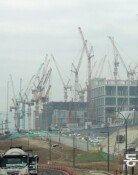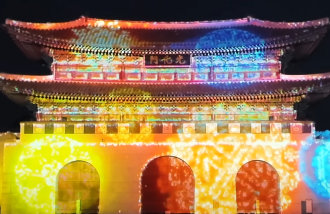Calders Work at WTCs Front, Carried into Korea with Junk
Calders Work at WTCs Front, Carried into Korea with Junk
Posted February. 10, 2002 11:58,
After the collapse of the World Trade Center (WTC) in New York City by the 9.11 attack, its metal ruins were carried into Korea for recycling purposes, and one of New Yorkers beloved works of sculpture is known to among the scraps. The `rescue campaign` for the sculpture piece is gaining momentum with prominent people from the U.S. culture and art world at the front.
The sculpture was named `Bent Propeller` made by a world-famous sculptor Alexander Calder, and was placed in the square in front of the WTC.
After the collapse of the towers, the partly destroyed sculpture was exported to Korea with other metal scraps, but leading figures in the American art world found out later and announced the news on public radio programs and news press websites.
Find The Sculpture!
The sculpture piece, which was 7 meters high and 1.5 centimeters thick, represented the modern industrialized civilization symbolized by machinery, and was placed in front of the WTCs building number 7 (47 stories) in 1970. It was buried between the twin towers, and its few parts were collected to be stored by New York Port Authority.
The rest of the sculpture are known to have been exported to Korea and India with other ruins. Calders grandson and other concerned individuals have been searching for the works remains since the end of last year.
The Scene Of Import
On the afternoon of the 8th, at the 82nd port of Incheon harbors 8 quay, cargo ship Tinnos (50,000 tons) brought in 46,000 tons of old metal, mostly WTC ruins. Harbor workers are keeping busy unloading the remains.
Dongkuk Steel Mill Co., Ltd., an import enterprise, intends to melt them electrically and reprocess them into iron bars and angles.
Korean spokesperson for the U.S metal exporter enterprise said, "The metal remains are crushed before loading on the ship. So even if the sculpture is buried in the lumps, itd be difficult to find."
Hee-Jae Park min07@donga.com



![화장실 갇혔을 때 생존법…“최후에는 변기뚜껑” [알쓸톡]](https://dimg.donga.com/c/138/175/90/1/wps/NEWS/IMAGE/2025/12/26/133042007.3.png)



